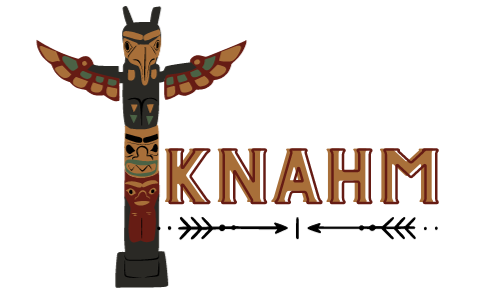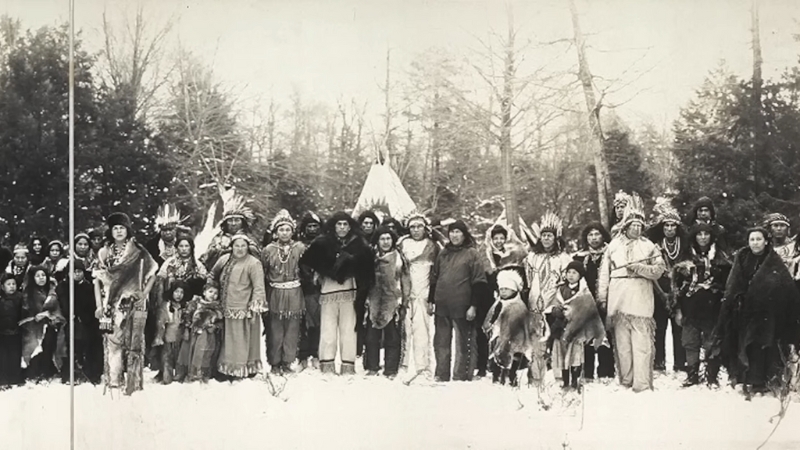The Iroquois, who call themselves the Haudenosaunee, meaning “People of the Longhouse,” are one of the most influential Indigenous nations in North American history.
Their confederacy – often referred to as the Iroquois Confederacy or the League of Five (later Six) Nations- was established centuries before European colonization and has been celebrated for its sophisticated system of governance, diplomacy, and cultural resilience.
For centuries, the Haudenosaunee shaped the balance of power in northeastern North America, controlling trade networks, forming alliances, and engaging in wars that reached from the Great Lakes to the Atlantic.
Their traditions, ceremonies, and clan-based social structures created a cohesive identity that has endured through colonization, displacement, and the modern era. Today, the Iroquois continue to thrive, maintaining language, ceremonies, and governance rooted in ancient traditions while adapting to contemporary challenges.
Origins and Early History
The Iroquois trace their origins to the northeastern woodlands of North America, in present-day New York, Pennsylvania, Ontario, and Quebec. Archaeological evidence suggests their ancestors lived in this region for thousands of years, practicing a mixed economy of farming, hunting, and fishing.
The formation of the Iroquois Confederacy is attributed to the Great Peacemaker (Deganawida) and his spokesperson Hiawatha, who united warring tribes under the Great Law of Peace.
This oral constitution created a framework for diplomacy, conflict resolution, and shared governance. Scholars estimate the Confederacy was formed between the 12th and 16th centuries, making it one of the oldest continuous democracies in the world.
The Six Nations of the Iroquois Confederacy
Originally composed of five nations, the Confederacy expanded to include a sixth in 1722. Each nation maintained its own identity but pledged unity under the Great Law of Peace.
Nation
Meaning / Translation
Territory
Mohawk
“People of the Flint”
Easternmost; New York’s Mohawk Valley
Oneida
“People of the Standing Stone”
Central New York
Onondaga
“People of the Hills”
Central New York; Firekeepers of the Confederacy
Cayuga
“People of the Great Swamp”
Finger Lakes region
Seneca
“People of the Great Hill”
Westernmost nation; “Keepers of the Western Door”
Tuscarora
Joined in 1722; originally from North Carolina
Settled in New York after migration
The Confederacy functioned as a political alliance, a cultural union, and a system of mutual defense, balancing the autonomy of each nation with the collective strength of all.
Political System: The Great Law of Peace
The Iroquois Confederacy was governed under the Great Law of Peace, one of the most advanced Indigenous political systems.
Its influence has been recognized by historians and even credited with inspiring elements of the U.S. Constitution.
Structure of Government
- Grand Council: Consisted of 50 chiefs (Hoyaneh) appointed by clan mothers. Decisions were made by consensus, not majority rule.
- Clan Mothers: Held the authority to appoint and remove chiefs, ensuring leadership reflected community consensus and accountability.
- Onondaga Nation: Served as “firekeepers,” hosting council meetings and maintaining records of decisions.
This system emphasized balance, accountability, and peace, offering a stark contrast to the European monarchies of the same era.
Economy and Daily Life
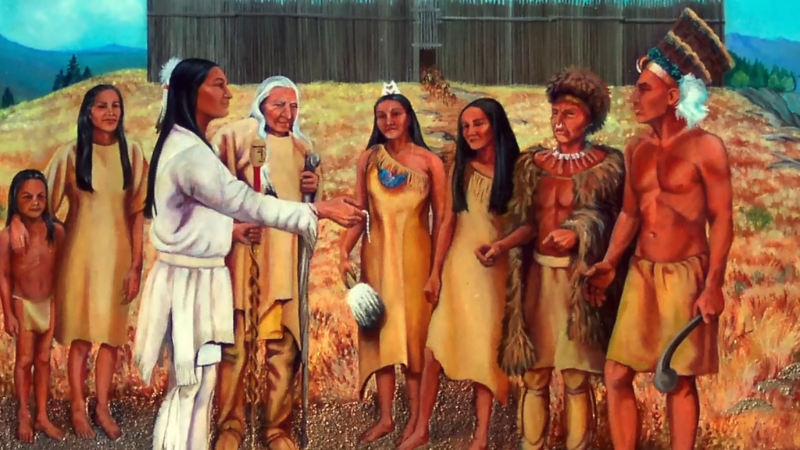
Agriculture
The Iroquois were skilled farmers. They cultivated the “Three Sisters” – corn, beans, and squash – grown together in a symbiotic system.
Corn provided a stalk for beans to climb, beans enriched the soil with nitrogen, and squash provided ground cover to retain moisture and suppress weeds. This sustainable method supported large populations.
Hunting and Fishing
Men hunted deer, elk, and small game, while fishing provided additional protein. Seasonal migrations often brought families to fishing camps along rivers and lakes.
Settlements
Communities lived in longhouses, large wooden structures covered in elm bark that could house multiple families from the same clan.
Longhouses were not just homes but symbols of unity – the Confederacy itself was often described as a “Longhouse” with doors guarded by the Mohawk in the east and the Seneca in the west.
Aspect
Description
Housing
Longhouses, 60–100 feet, housing multiple families
Villages
Often fortified with palisades for defense
Economy
A combination of farming, hunting, fishing, and trade
Transportation
Birchbark canoes and overland trails
Spirituality and Beliefs
View this post on Instagram
Iroquois spirituality is deeply tied to nature, balance, and gratitude.
- The Creator (Orenda): A spiritual force present in all things.
- Ceremonies: Seasonal rituals marked the agricultural cycle – Maple Ceremony, Planting Ceremony, Green Corn Festival, and Harvest Festival.
- False Face Society: A healing society known for carved wooden masks used in curing ceremonies.
- Dreams: Viewed as messages and guides for personal and communal decisions.
The Iroquois emphasized harmony with the natural world, seeing themselves as caretakers rather than owners of the land.
Clan System and Kinship
The Iroquois were organized into matrilineal clans, meaning descent and inheritance followed the mother’s line. Prominent clans included Bear, Wolf, and Turtle.
- Clan Mothers: Held significant authority, including appointing chiefs.
- Marriage Rules: Members had to marry outside their clan to prevent inbreeding and strengthen inter-clan unity.
- Kinship Obligations: Extended families ensured that children and elders were cared for, reinforcing social cohesion.
This system placed women at the heart of governance and community life, making Iroquois society one of the most gender-balanced in pre-colonial North America.
Relations with Europeans
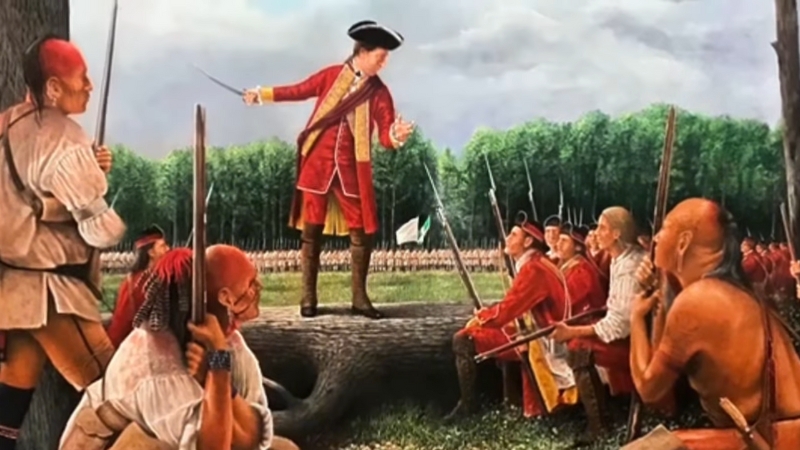
Early Contact
The arrival of Europeans in the 1600s brought new opportunities and dangers. The Iroquois engaged in the fur trade, exchanging beaver pelts for guns, cloth, and metal tools.
The Beaver Wars (17th Century)
“The Iroquois displaced and destroyed many tribes” in what could be classed as a genocide.
The 17th century Beaver Wars, otherwise referred to as the Iroquois Wars, were a series of conflicts that took place between various Native American tribes. These wars primarily occurred…— Barry Sharp (@BarryESharp) October 1, 2024
The Iroquois fought a series of conflicts against the Huron, Erie, and other tribes to dominate the fur trade. These wars extended their influence across the Great Lakes and Ohio Valley, but also led to depopulation and devastation.
Diplomacy and Balance of Power
During the colonial era, the Iroquois skillfully balanced alliances between the French, British, and, later, the Americans. Their diplomacy made them powerful brokers in North America for nearly two centuries.
Role in U.S. History
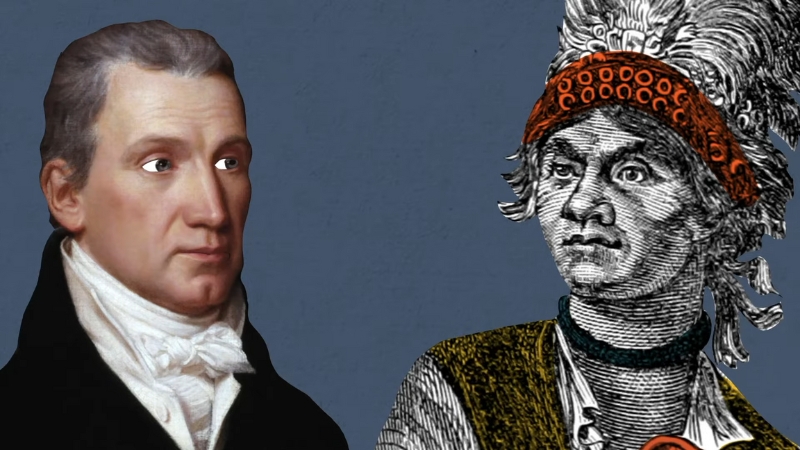
American Revolution
The Iroquois Confederacy faced division during the Revolution. Some nations, like the Mohawk under Joseph Brant, supported the British, while others leaned toward the Americans.
The war fractured the Confederacy, leading to significant land loss afterward.
Treaties and Land Loss
Through treaties such as the Treaty of Fort Stanwix (1784) and subsequent agreements, the Iroquois lost vast tracts of land in New York, Pennsylvania, and Ohio.
By the 19th century, many Iroquois were relocated to reservations in New York, Wisconsin, and Ontario.
19th and 20th Century Challenges
The 19th century brought immense hardship. Forced removals, broken treaties, and assimilation policies sought to dismantle Iroquois culture.
Children were sent to boarding schools where they were forbidden to speak their language. Ceremonies were restricted, and communal lands were divided under the Dawes Act.
Yet, the Iroquois adapted. They continued to hold ceremonies in secret, passed down oral traditions, and engaged in legal battles to protect sovereignty. The 20th century saw renewed efforts to preserve language and culture, with Iroquois leaders playing active roles in pan-Indigenous movements.
The Iroquois Today
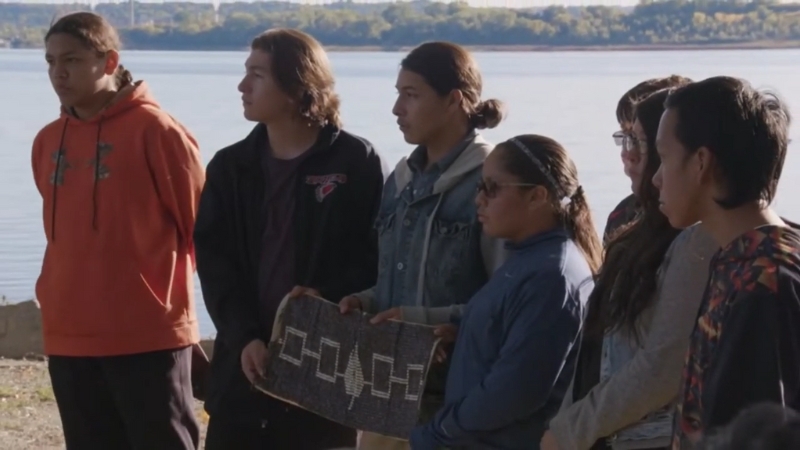
Today, the Haudenosaunee live on reservations and territories in New York, Wisconsin, Quebec, and Ontario, with populations also spread across the United States and Canada.
Key communities include:
- Onondaga Nation (NY): Hosts the central fire of the Confederacy.
- Six Nations of the Grand River (Ontario): Largest Iroquois reserve in Canada.
- Oneida Nation (WI & NY): Known for economic enterprises and cultural programs.
Modern Initiatives
- Language Revitalization: Immersion schools and university programs teaching Mohawk, Oneida, and other languages.
- Cultural Ceremonies: Powwows, longhouse ceremonies, and seasonal festivals.
- Economic Development: Casinos, renewable energy, and cultural tourism.
- Political Advocacy: Active defense of land rights, treaty obligations, and environmental stewardship.
Area
Example of Modern Development
Language
Mohawk and Oneida immersion schools
Economy
Tribal enterprises, gaming, and agriculture
Culture
Revived longhouse ceremonies, public powwows
Advocacy
Land claim cases, Standing Rock support, climate initiatives
Contributions and Legacy
The Iroquois have left a lasting mark on history and continue to shape contemporary conversations:
- Political Thought: Their Great Law of Peace influenced American democratic ideals.
- Gender Balance: Matrilineal systems challenged European assumptions of male-dominated leadership.
- Military Role: Their alliances and conflicts with colonial powers defined the map of North America.
- Environmental Philosophy: Their emphasis on the Seventh Generation principle – making decisions with the welfare of future generations in mind – has become a global model of sustainability.
Conclusion
@nativeamerican.history The history of the Iroquois Tribe. Iroquois Nation Iroquois Indian Iroquois Women Iroquois Men Iroquois Pride Iroquois Land Iroquois Territory Iroquois Warrior Iroquois Hunter Native American Native American History #iroquois #iroquoistribe #iroquoisnation #iroquoisconfederacy #nativeamericans #americanindian #nativeamericanhistory #nativeamerican #iroquoishistory ♬ original sound – NativeAmerican
The Iroquois, or Haudenosaunee, stand as a testament to resilience, governance, and cultural continuity. From their early unity under the Great Law of Peace to their pivotal role in colonial and U.S. history, their story reflects both struggle and survival.
Like the Sioux people, whose history also reveals adaptation, strength, and cultural endurance, the Haudenosaunee show how Native nations continue to shape history in powerful ways.
Despite centuries of colonization, land loss, and assimilation policies, they continue to maintain their traditions, languages, and ceremonies, ensuring that their legacy endures.
In the modern era, the Haudenosaunee are not relics of the past but living nations asserting sovereignty, revitalizing culture, and shaping the future.
